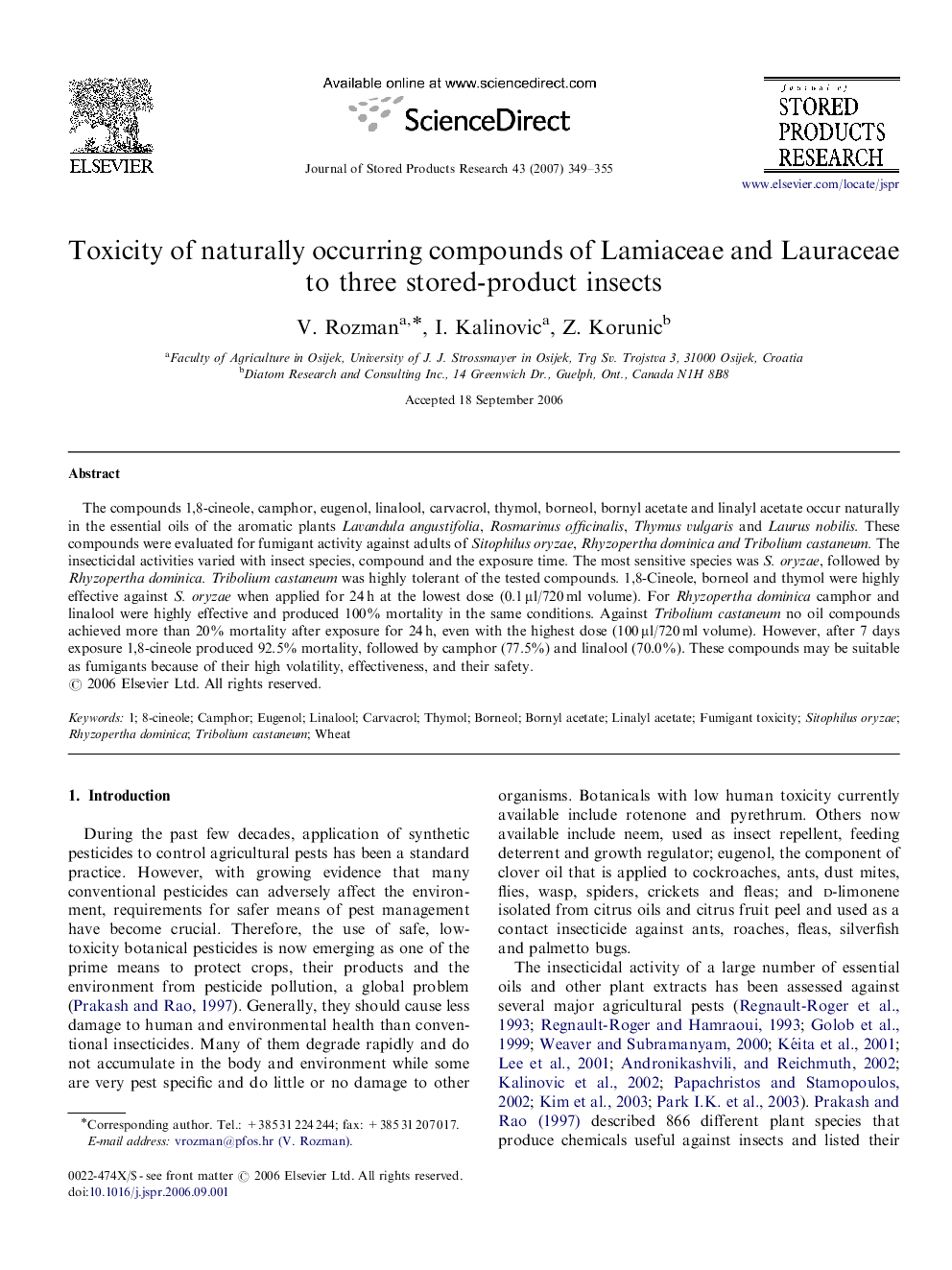| Article ID | Journal | Published Year | Pages | File Type |
|---|---|---|---|---|
| 4517415 | Journal of Stored Products Research | 2007 | 7 Pages |
The compounds 1,8-cineole, camphor, eugenol, linalool, carvacrol, thymol, borneol, bornyl acetate and linalyl acetate occur naturally in the essential oils of the aromatic plants Lavandula angustifolia, Rosmarinus officinalis, Thymus vulgaris and Laurus nobilis. These compounds were evaluated for fumigant activity against adults of Sitophilus oryzae, Rhyzopertha dominica and Tribolium castaneum. The insecticidal activities varied with insect species, compound and the exposure time. The most sensitive species was S. oryzae, followed by Rhyzopertha dominica. Tribolium castaneum was highly tolerant of the tested compounds. 1,8-Cineole, borneol and thymol were highly effective against S. oryzae when applied for 24 h at the lowest dose (0.1 μl/720 ml volume). For Rhyzopertha dominica camphor and linalool were highly effective and produced 100% mortality in the same conditions. Against Tribolium castaneum no oil compounds achieved more than 20% mortality after exposure for 24 h, even with the highest dose (100 μl/720 ml volume). However, after 7 days exposure 1,8-cineole produced 92.5% mortality, followed by camphor (77.5%) and linalool (70.0%). These compounds may be suitable as fumigants because of their high volatility, effectiveness, and their safety.
